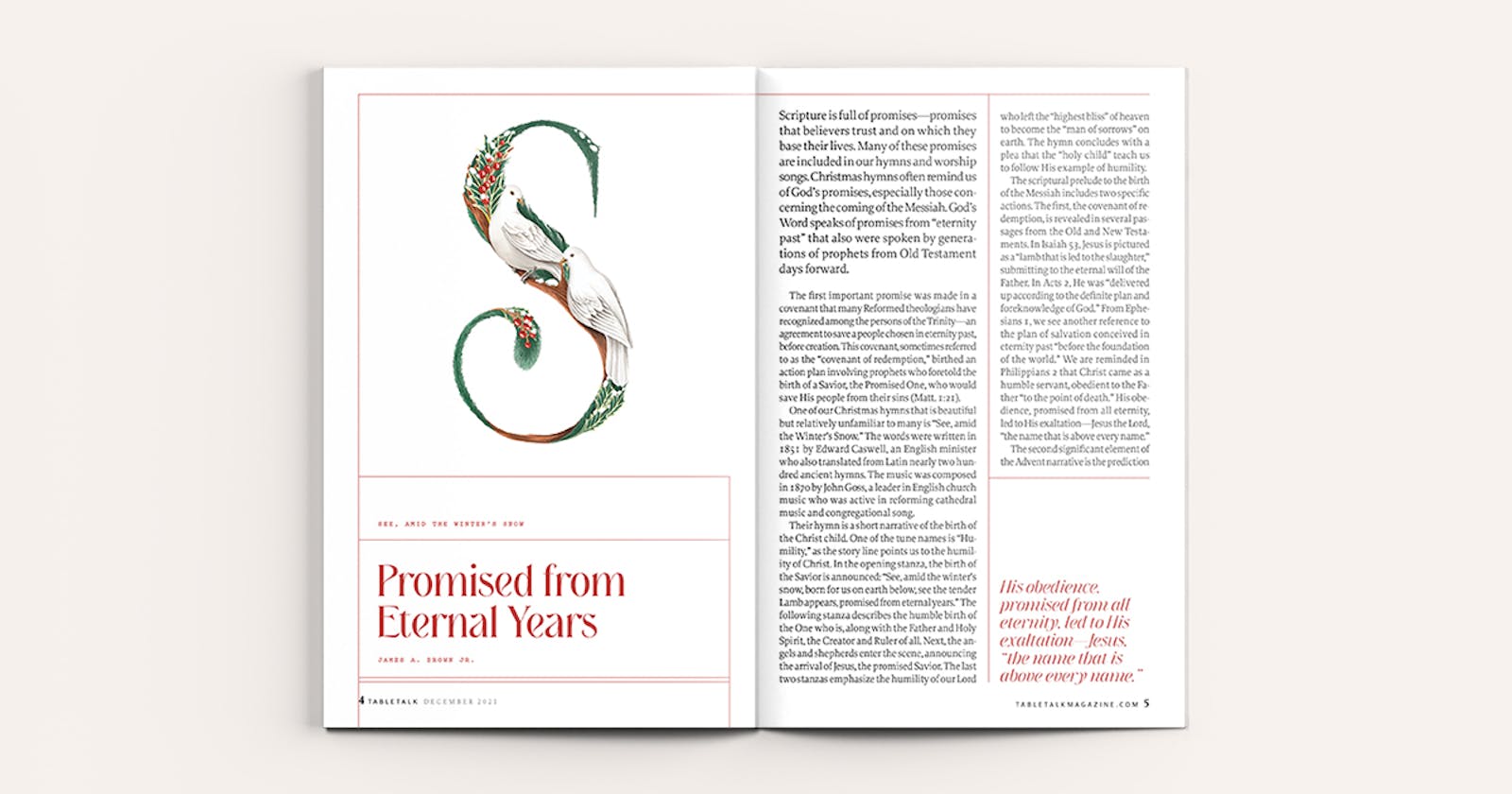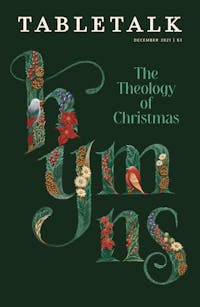
Request your free, three-month trial to Tabletalk magazine. You’ll receive the print issue monthly and gain immediate digital access to decades of archives. This trial is risk-free. No credit card required.
Try Tabletalk NowAlready receive Tabletalk magazine every month?
Verify your email address to gain unlimited access.
Scripture is full of promises—promises that believers trust and on which they base their lives. Many of these promises are included in our hymns and worship songs. Christmas hymns often remind us of God’s promises, especially those concerning the coming of the Messiah. God’s Word speaks of promises from “eternity past” that also were spoken by generations of prophets from Old Testament days forward.
The first important promise was made in a covenant that many Reformed theologians have recognized among the persons of the Trinity—an agreement to save a people chosen in eternity past, before creation. This covenant, sometimes referred to as the “covenant of redemption,” birthed an action plan involving prophets who foretold the birth of a Savior, the Promised One, who would save His people from their sins (Matt. 1:21).
One of our Christmas hymns that is beautiful but relatively unfamiliar to many is “See, amid the Winter’s Snow.” The words were written in 1851 by Edward Caswell, an English minister who also translated from Latin nearly two hundred ancient hymns. The music was composed in 1870 by John Goss, a leader in English church music who was active in reforming cathedral music and congregational song.
Their hymn is a short narrative of the birth of the Christ child. One of the tune names is “Humility,” as the story line points us to the humility of Christ. In the opening stanza, the birth of the Savior is announced: “See, amid the winter’s snow, born for us on earth below, see the tender Lamb appears, promised from eternal years.” The following stanza describes the humble birth of the One who is, along with the Father and Holy Spirit, the Creator and Ruler of all. Next, the angels and shepherds enter the scene, announcing the arrival of Jesus, the promised Savior. The last two stanzas emphasize the humility of our Lord who left the “highest bliss” of heaven to become the “man of sorrows” on earth. The hymn concludes with a plea that the “holy child” teach us to follow His example of humility.
The scriptural prelude to the birth of the Messiah includes two specific actions. The first, the covenant of redemption, is revealed in several passages from the Old and New Testaments. In Isaiah 53, Jesus is pictured as a “lamb that is led to the slaughter,” submitting to the eternal will of the Father. In Acts 2, He was “delivered up according to the definite plan and foreknowledge of God.” From Ephesians 1, we see another reference to the plan of salvation conceived in eternity past “before the foundation of the world.” We are reminded in Philippians 2 that Christ came as a humble servant, obedient to the Father “to the point of death.” His obedience, promised from all eternity, led to His exaltation—Jesus the Lord, “the name that is above every name.”

The second significant element of the Advent narrative is the prediction by prophets of the birth of our Savior and Redeemer. The most familiar passages are found in Isaiah: “For to us a child is born, to us a son is given; . . . and his name shall be called Wonderful Counselor, Mighty God, Everlasting Father, Prince of Peace” (Isa. 9). Later we encounter the Suffering Servant as He pursues His mission, bearing our sins, interceding for us, and bringing us healing and peace (Isa. 53:4, 5, 12). His kingship is celebrated in the prophecy of the coming “ruler in Israel” (Mic. 5) and the rejoicing of His people; “Shout aloud, O daughter of Jerusalem!” (Zech. 9:9). Several Old Testament prophecies appear again in the Gospels, and in Luke 2, we meet Simeon, a righteous man, and Anna, a prophetess, who speak of the long-awaited “consolation of Israel” and the “redemption of Jerusalem.”
Our Christmas hymn closes with the refrain “Hail, thou ever-blessed morn! Hail, redemption’s happy dawn! Sing through all Jerusalem, Christ is born in Bethlehem.” And so, we celebrate a promise fulfilled, from the covenant of redemption agreed to in eternity past, to the prophecies concerning the coming of the Messiah, to His humble arrival as the Anointed One who would, through His life, death, resurrection, and ascension, save His people. He surrendered, for a time, His position of highest bliss that we might join Him one day, experiencing eternal bliss and worshiping Him forever and ever. “Hallelujah! What a Savior!”
